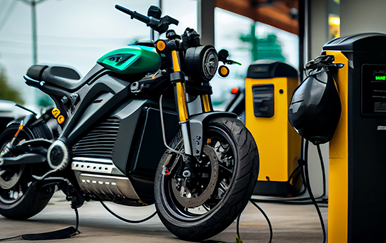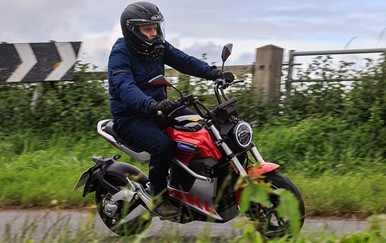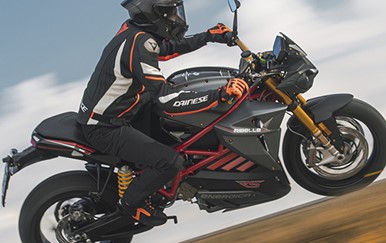If you’re in the market for a new ride, now may be the best time to switch to electric.
Electric motorcycles are becoming an ever more attractive option for riders, thanks to the improved range, efficiency, and far more affordable models being released.
In this blog, we will be running down our full guide to electric motorcycles, filled with everything you will need to know before purchasing your first electric bike. So without further ado, let’s get into it, shall we?
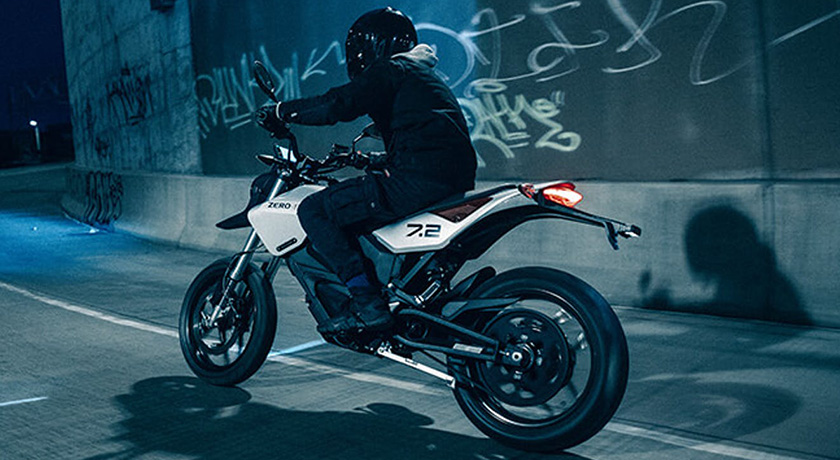
What do I need to ride an electric motorcycle?
Much like their petrol-fuelled counterparts, you will need to be fully prepared and protected before you get yourself out on the roads on your new shiny electric motorbike.
In order to get yourself ready to ride, you will need:
1. A valid licence
If you intend to ride an electric motorcycle or moped that exceed speeds of 28mph, you will need to be at least 17 years old and have passed your CBT as a minimum.
Electric motorcycle licencing works the same as their petrol-fuelled counterparts, so if you have passed your CBT, you will be able to ride up to a 125cc electric alternative and so on.
*For more on UK laws and licensing rules, head over to our UK law and electric motorbikes: What you need to know article.
2. Insurance

In the UK, if you are planning to ride your electric bike on public roads, you will need to insure it.
Again, electric motorcycles work in exactly the same way as their petrol-fuelled counterparts so you are legally required to have third-party insurance coverage as minimum.
Whilst the market is improving for electric motorbikes, there are still some insurers out there who will not cover certain types - so it is well worth doing your research beforehand and shopping around for a deal that fits you and your needs!
However, if you are looking for electric motorcycle insurance then good news! We here at Lexham are electric motorcycle and moped specialists and can offer you a competitive quotation by filling out a quotation form.
3. A spare battery
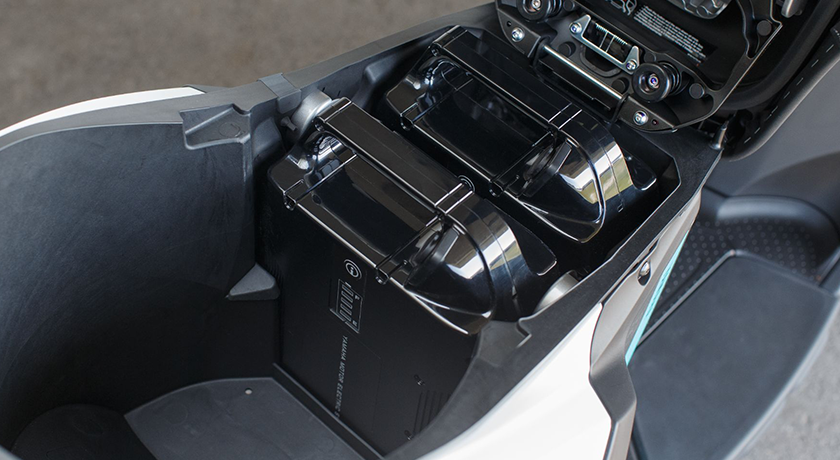
Whilst removable batteries are not an option on all electric motorbikes on the market right now, there are an increasing number that do - especially small capacity models.
Removable batteries allow far more freedom on your bike, allowing you to charge one battery at home, whilst you use the other to commute to and from work.
There are a lot of electric motorcycles out there today that also offer an option of adding a spare battery to help improve range, meaning your spare battery isn’t just a matter of convenience; it could help you take longer journeys too.
4. Charging cables
If you have an electric motorcycle or moped with its own charging cable it would be advisable to have it with you, so you never get in a tricky situation with flat battery and no cable.
When you’re on the road, unless you are popping on a very short journey and you are fully charged it is advisable to have your charging cable on hand ready to change when required.
It is important to also remember that not all chargers are the same, so if you’re packing a Level 2 J1772 cable but the only charging point you can find is a Level 1 3-pin socket, you could be in big trouble.
A recommendation would be to store it in the secure under-seat storage compartment (if space allows) so you always have it on the go with you!
Where to find charging points in the UK
Finding the next charging point, especially when you’re planning a long journey or road trip can prove quite stressful.
Whilst charging points are becoming more of a regular occurrence in service stations, in comparison to petrol stations, they are still very few and far between. Here are just some of the best apps and tools that can help you find electric charging points just that little more easily and conveniently:
A map of charge points in Norfolk
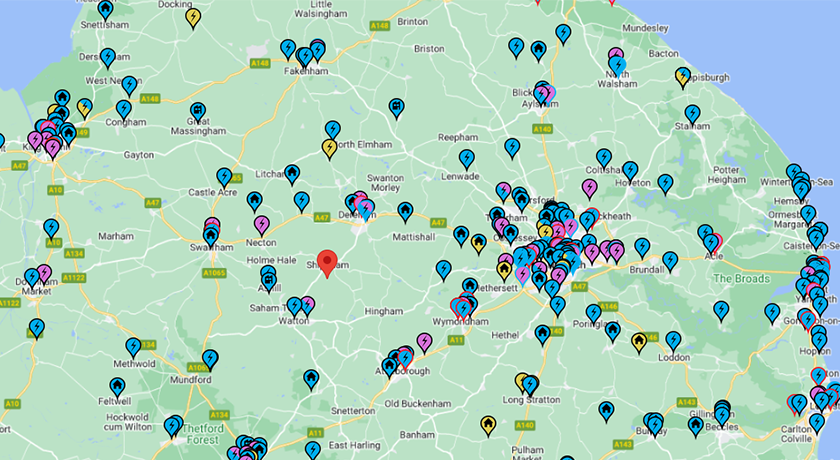
Zapmap
Zapmap offers both a map of over 18,000 public charge points in the UK, which you can access via their website or a mobile app. It also offers a route planner that takes into account the range of your vehicle
Whilst this app leans more towards cars, it does cover the more popular electric motorcycles and scooters, which makes it really easy to figure out where you need to stop and for how long.
PlugShare
PlugShare boasts a database of 300,000 charge points across the world, making this app perfect if you want to take your bike abroad.
However, whilst this app may be great for abroad, it means that its catalogue of UK charging points is slightly smaller than some of the competitors mentioned in this list - if you’re going to use PlugShare in the UK, we’d recommend supplementing it with another charging point map.
A Better Routeplanner
A Better Routeplanner is perfect for (as the name suggests) planning your route in comparison to just finding you the nearest charging point.
Alike PlugShare, its focus is international, making it ideal for travelling abroad!
Find charge points on Google Maps
Google is slowly but surely adding charging points to their maps offering, making it quick and easy to find your nearest charging point or plan your route.
This is a reasonably new functionality, though so it’s not quite there yet. If you’re planning a route, it’s best to check your stops before you set off.
Install a charge point at home
If you are in a position where you can install an electric charging point at home then it may prove worthy to invest, saving you the time and the stress of finding where the next charging station is.
For advice on installing an electric charging point, head over to our full guide on everything you need to know.
Other electric motorcycle considerations
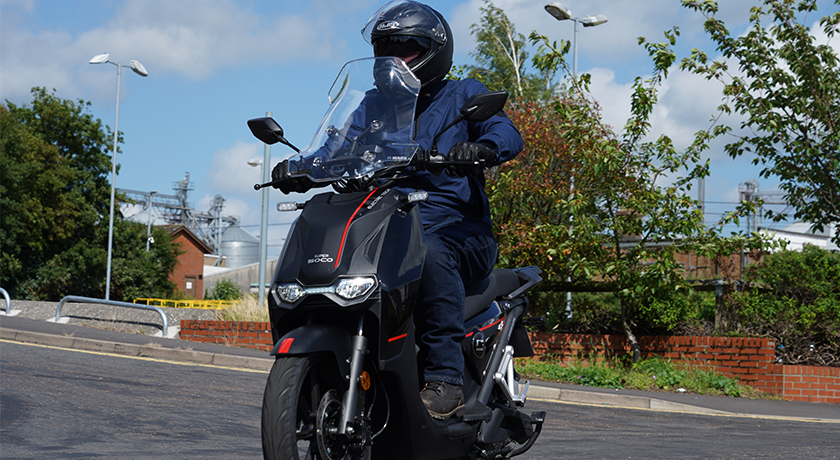
It is not only physical things you need to take into consideration when thinking about switching to electric, you also need to think about the maintenance costs that come with owning an electric motorbike. These are as follows:
MOT
Like any modern combustion vehicle, you must have a valid and up-to-date MOT in order to ride your bike on the roads.
It is worth mentioning that if you are unsure whether your bike is taxed and has a valid MOT, you can access this through the GOV.UK website to avoid unwanted fines and fees.
Licence plates
Licence plates on electric mopeds, scooters, and motorcycles must be displayed in the usual way.
Road tax
When it comes to road tax, up until 1st April 2025, all electric vehicles (including motorcycles and mopeds) are exempt from road tax, meaning that you will have to pay the small price of £0 a year.
It is worth noting that even if you don’t have to pay for road tax, you will still need to register your bike with the DVLA using a V5 document to notify them that you will be using your vehicle on the roads.
Electric motorcycle costs
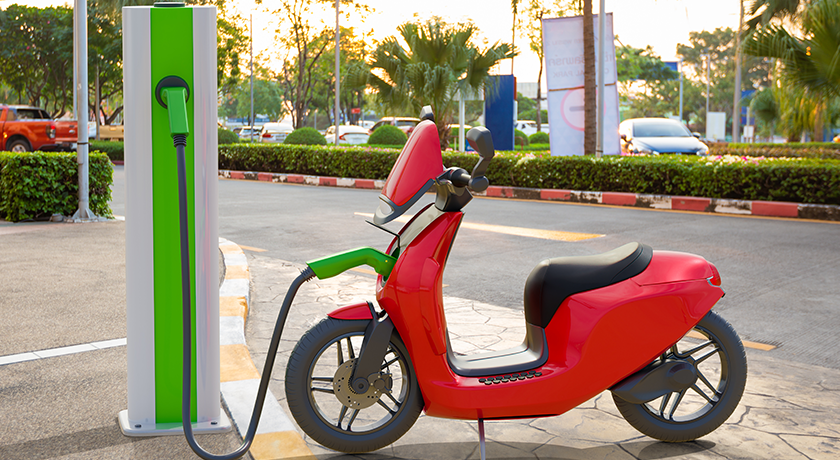
Charging your electric Motorcycle will vary in cost depending on where you choose to charge it.
Generally charging at home tends to be the cheapest way, the actual cost though will depend on various factors, such as your electric tariff (how much it costs you per kWh) and also the capacity of your battery/ies.
Let’s run through a couple of examples to show what to expect…
Example 1: Supersoco CPX with Dual Batteries
If we go by the average UK price per kWh right now that is 34p per kWh and the fact that each of the CPX’s batteries holds 2.7 kWh we know combined those two batteries can take 5.4 kWh of electricity. Therefore, we can figure out that 5.4 kWh of electricity at 34p per unit would result in a cost of £1.84 per full charge on the dual battery SuperSoco CPx.
Further still if we believe the full range on those batteries is 60 miles (Supersoco’s stated 87-mile range isn’t that realistic in the real world), we can figure out that each mile of travelling equates to about 3p.
Now it is worth stating the Supersoco is a small electric scooter, with type 1 (3-pin plug), for those interested in a larger capacity bike, you might well like example 2.
Example 2: Zero SR 14.4
This time around we’ll go with a Zero SR 14.4 charging at home and we’ll keep to the average UK kWh price of 34p. Now the Zero 14.4 has a battery capacity of 14.4kWh so a full charge on that battery will cost a shade under a fiver at £4.90. If we went with a range of 100 miles on a full charge, this works out at about 5p per mile.
Now we can do a quick example for the Zero SR 14.4 if you need to charge up while on a journey.
Gridserve currently (at the time of writing this article) charges 49p per kWh for a Type 2 AC charge, so for examples’ sake if you needed a full charge on your Zero SR 14.4, this would cost you in the region of £7.06, and work out to be about 7p per mile.
Now it’s important to state the above are just examples, make sure to do your own calculations based on the electric tariff you’ll be using along with the details of the electric bike you are interested in.
Our electric motorcycle recommendations
If you're interested in going down the electric motorcycle or scooter roads, why not check out some of our top picks:



